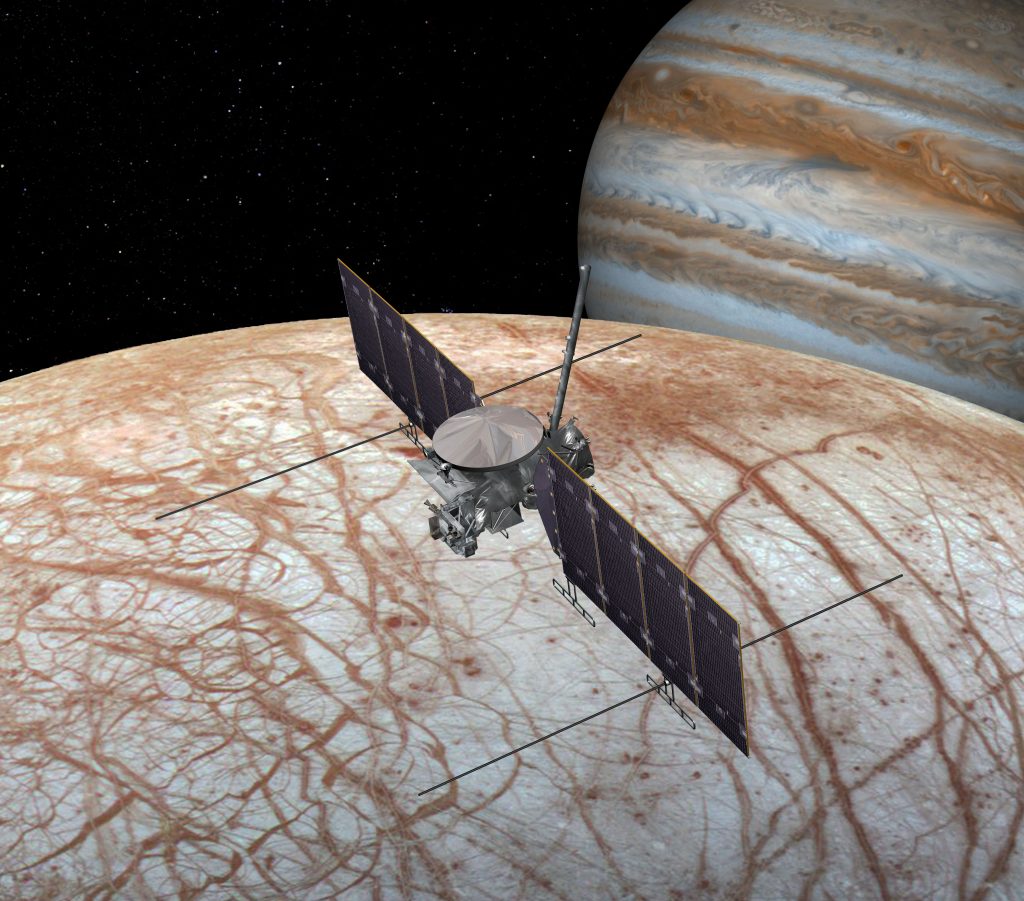
Our Polar and Planetary researchers are involved in a number of missions across the solar system, including Europa Clipper, JUICE, Cassini, Mars Reconnaissance Orbiter, and Mars Express.
Donald Blankenship is Principal Investigator of the Radar for Europa Sounding and Assessment: Ocean to Near-surface (REASON) instrument onboard the Europa Clipper mission. REASON will revolutionize our understanding of Europa’s ice shell by providing the first direct measurements of its surface character and subsurface structure. REASON addresses key questions regarding Europa’s habitability, including the existence of any liquid water, through the innovative use of radar sounding, altimetry, reflectometry, and plasma analyses. These investigations require a dual-frequency radar (HF and VHF frequencies) instrument with concurrent shallow and deep sounding that is designed for performance robustness in the challenging environment of Europa. The mission plan also includes using REASON as a nadir altimeter capable of measuring tides to test ice shell and ocean hypotheses as well as characterizing roughness across the surface statistically to identify potential follow-on landing sites. Blankenship is also a Co-Investigator on the Radar for Icy Moon Exploration (RIME) instrument onboard ESA’s Jupiter Icy moons Explorer (JUICE) mission, which will study the subsurface structure of Ganymede, Europa, and Callisto.
Cyril Grima pioneered a new radar analysis technique (reflectometry) for planetary cryospheres with air-/space-borne radar sounders at Earth, Mars, Titan, and Europa. His aim is to understand the fundamental evolution processes of those freezing environments. Specifically, his research focuses on detection of the cryosphere/hydrosphere boundary and characterization of the planetary surfaces for geologic and landing site characterization purposes. In addition, Grima has interests in studying planetary ionospheres through its interactions with radio waves. He is an active member of the SHARAD (Mars), RIME (Ganymede/Europa/Callisto), Cassini RADAR (Titan), and REASON (Europa) radar instruments.
Krista Soderlund is involved with several instrument and mission concept teams relating to icy satellites and giant planets. As a Co-Investigator of the ice-penetrating radar instrument (REASON) selected for NASA’s Europa Clipper mission, she is the science team coordinator, a member of the Science Requirements Working Group, and investigates surface-ice-ocean exchange processes. Moving outward in the solar system, Soderlund is also a Co-Investigator on the pending Saturn PRobe Interior and aTmospheric Explorer (SPRITE) mission that was proposed to NASA’s New Frontiers 4 program; the two main science goals are to (1) collect and analyze evidence of Saturn’s formation and early evolution and (2) reveal the properties and processes hidden beneath Saturn’s upper clouds. In addition, as a member of the Ice Giant mission science definition team, Soderlund helped NASA conduct a generic study of mission options for exploring Uranus and/or Neptune. The team established prioritized science objectives and a realistic scientific concept of operations, developed and assessed alternative architectures, including model payload/instrument suites for proof of concept, and guided threshold science objectives/measurements for viable missions within resource constraints provided by NASA.
